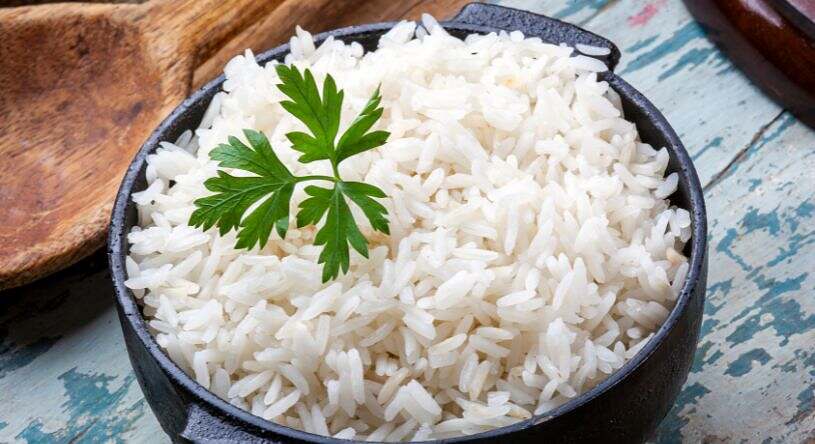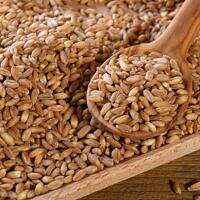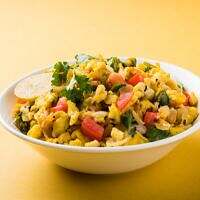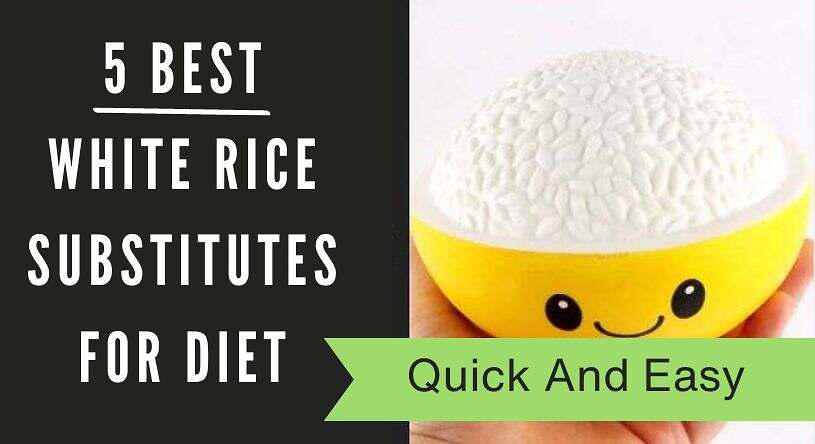5 Best White Rice Substitutes – Embrace A New Taste!
Worldwide, rice is still the most widely consumed staple food. Think of some of the top 10 cuisines from country to country and you’ll find it in there somewhere. But just like white pasta, white rice can raise blood sugar and spike insulin, leading to weight gain. So for those wanting to lose weight and still enjoy their food, finding a healthier option is important
We’ve found you some of the best white rice substitutes, some you’ve probably never heard of.
Contents
Is eating white rice every day bad for you?
Short answer, yes, and in more ways than you think. Some even liken white rice to candy in its effect on the body.
Overexageration? Well not quite…
White rice is one of the highest starch foods. With a glycemic index score of 73 out of 100 (70 is regarded as very high), making white rice a very high glycemic food.
The main reasons for this? The removal of fiber. This essential nutrient, stripped away during the refining process, transforms brown rice into white rice.


As the outer layers are removed, valuable B vitamins, minerals, and antioxidants are lost also. Without that fiber, white rice easily digests in the body. It then quickly raises blood sugar levels, putting your body in a state that is geared towards packing on the pounds.
In addition, a single cup of white rice contains 45 grams of carbohydrates. For those on a low-carb diet, this will blow your carb allowance out of the water.
It’s the reason most nutritionists will recommend having white rice a maximum of twice a week.
On those occasions you have white rice, it’s advised to have just half a cup of cooked rice per meal. That is a lot less than most people will eat in a meal. So it makes sense to just avoid regular consumption.
Pros and cons of brown rice
Now, let’s uncover the truth about brown rice, often referred to as whole-grain rice. Brown rice’s glycemic index score is 68, which makes it just a little lower than white rice. But it’s still the healthier choice.


Unlike white rice, brown rice is a whole grain that retains valuable nutrients found in the germ and bran layers.
This type of rice will give you antioxidants, vitamins, and minerals. For one cup of brown rice, you get 86% of the daily recommended intake of manganese. Brown rice also contains potent anti-cancer flavonoids. Thanks to its fiber content, brown rice helps regulate post-meal blood sugar levels.
There are some downsides to eating brown rice
Cons of eating brown rice
Antinutrients: Did you know that brown rice contains antinutrients called phytic acid and lectins? While they may sound intimidating, these compounds have some interesting effects on our bodies.
These can interfere with the absorption of important minerals like iron, zinc, and calcium. This means that even though brown rice is packed with nutrients, these antinutrients can prevent our bodies from fully benefiting from them.
Digestive Sensitivities: Brown rice, particularly the bran and germ layers, contains higher amounts of insoluble fiber compared to white rice. While fiber is generally beneficial for digestive health, some individuals may experience digestive discomfort, bloating, or gas when consuming larger quantities of brown rice.
Arsenic Content: Brown rice, along with other rice varieties, may contain trace amounts of arsenic. Arsenic is a naturally occurring element found in soil and water, and rice plants are more prone to absorbing it.
Being exposed to this over time can be detrimental to health. To minimize the risk, it’s advisable to rinse rice thoroughly before cooking and consider sourcing rice from regions with lower arsenic levels.
Also recommended: 13 Nighttime Drinks For Weight Loss – Lose While You Snooze
The top 5 best white rice alternatives for weight loss
If you’re now wondering, “What can I substitute for rice to lose weight?” then we’ve got the best white rice alternatives below. Switch them around and see which one works for you, or use all of them, the choice is yours.
Quinoa:


Quinoa is not a grain but a relative of spinach. It is also:
- A complete protein, providing all essential amino acids
- Low in carbs and high in protein and fiber, making it ideal for diabetics.
- This is packed with B vitamins, magnesium, and antioxidants.
- With a glycemic index (GI) of 53, it has a lesser impact on blood sugar levels compared to rice.
Freekeh:


Freekeh is a type of grain that is derived from green durum wheat that has been harvested while still young and green, then roasted and cracked. This is a popular grain in Middle Eastern and North African cuisines.
- A whole grain is harvested while still green.
- It has a low glycemic index of 43.
- Rich in protein and fiber.
- Provides 8 grams of protein and 4 grams of fiber per one-fourth cup serving.
- Contains glutamic acid, which aids nerve cells and improves brain functionality.
Farro:


Farro is an ancient wheat grain that has been cultivated for thousands of years. Its origins lie within the Mediterranean region. It has a distinct nutty flavor and a pleasantly chewy texture. It adds depth and character to both sweet and savory dishes.
- It is a good source of fiber, protein, zinc, and B vitamins.
- Offers 6 grams of protein and 5 grams of fiber per one-fourth cup serving.
- This gives you lots of those beneficial polyphenols, carotenoids, and selenium, offering protection against cancer, heart disease, and diabetes.
- Source of Complex Carbohydrates: Farro is a complex carbohydrate, providing sustained energy release and helping to keep blood sugar levels stable.
- Lower in Gluten: While farro does contain gluten, some individuals with gluten sensitivity may find that they tolerate farro better than modern wheat varieties. However, it is not suitable for those with celiac disease.
Shirataki Rice:


Shirataki rice is a type of rice substitute made from konjac yam (also known as glucomannan). You can find it in the aisles of many Asian supermarkets. Here’s a brief overview of shirataki rice:
- Shirataki noodles have been around for a long time, and the rice version is relatively new.
- Made from a root, they are translucent and low in calories.
- Suitable for low-carb, gluten-free diets.
- Contains glucomannan starch, which aids in weight loss.
- Known as “miracle noodles” due to their beneficial properties.
- Virtually Zero Net Carbs: Due to its low carbohydrate content, shirataki rice has virtually zero net carbs. This makes it an attractive option for those following a ketogenic or low-carb lifestyle
Cauliflower Rice


Cauliflower rice is now a sought-after alternative to standard rice. This is mainly down to its low-carb nature and nutrient density.
- Cauliflower rice has a low GI, making it a suitable option for managing blood sugar levels.
- Low in Calories and Carbohydrates: Cauliflower rice is significantly lower in calories and carbohydrates compared to rice, making it beneficial for weight management and low-carb diets.
- High in Fiber and Nutrients: It provides dietary fiber, vitamins (C, K), and minerals (potassium, manganese) to support overall health.
- Naturally low in calories, cauliflower rice can be a valuable addition to weight management and calorie-conscious eating plans.
- Those with gluten sensitivities or celiac disease will love cauliflower rice. It’s an ideal and easy switch for white riceCheck out the video below for how to make cauliflower rice
Bottom line – Best White Rice Substitutes
These are some of the best white rice substitutes and should see you through many a rice-based dish. For those times that only white rice will do, go with whole-grain options like brown basmati rice or brown jasmine rice.
These varieties retain more of the bran and germ, making them richer in fiber, nutrients, and antioxidants compared to their refined counterparts.
Practice Portion Control: Controlling your portion sizes is key to enjoying white rice in a healthy way. Aim for a modest serving size of about half a cup of cooked white rice per meal. Have it with lots of vegetables, lean proteins, and healthy fats to create a well-balanced plate.
Incorporate Protein and Fiber:
Enhance the nutritional value of your white rice dish by adding protein and fiber-rich ingredients. Consider topping your rice with grilled chicken, tofu, or beans to increase the protein content. You can also mix in a colorful medley of vegetables or include a side salad to boost fiber intake.










